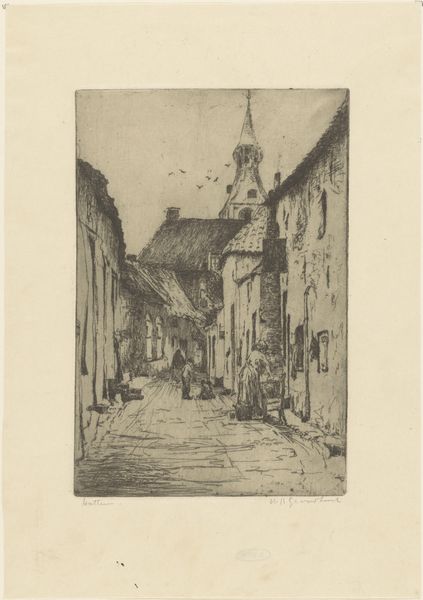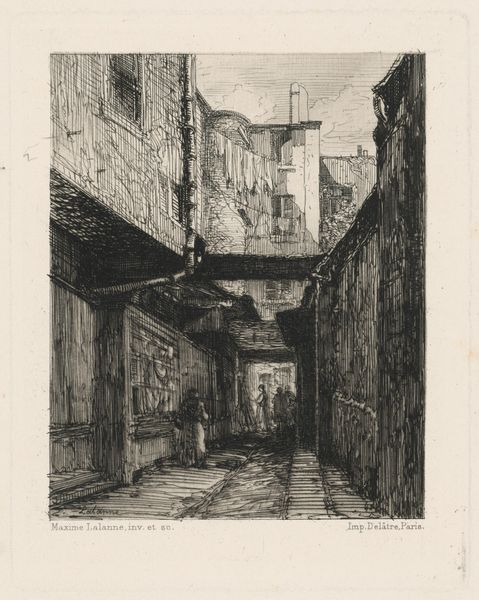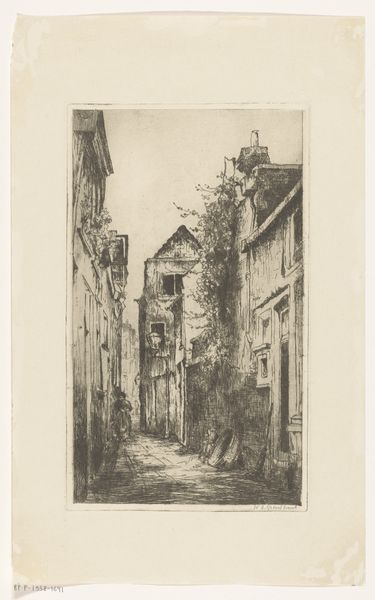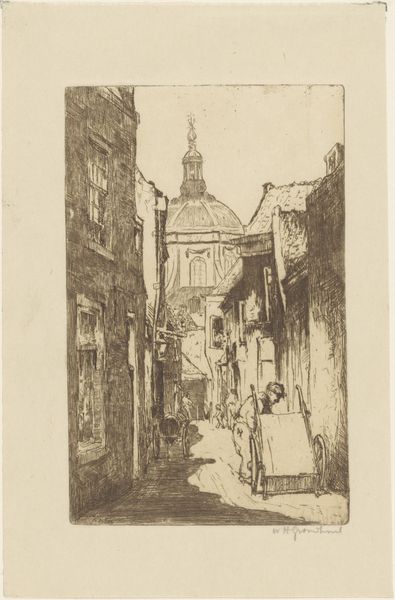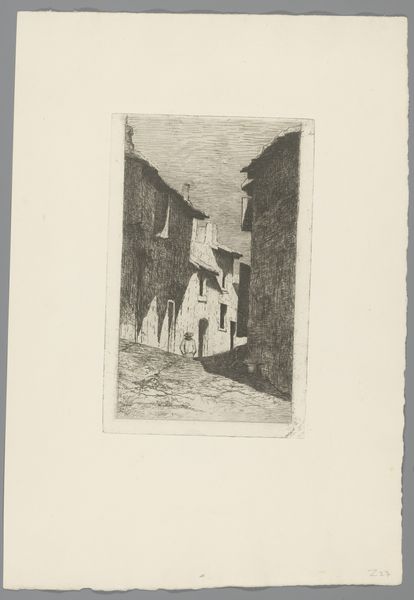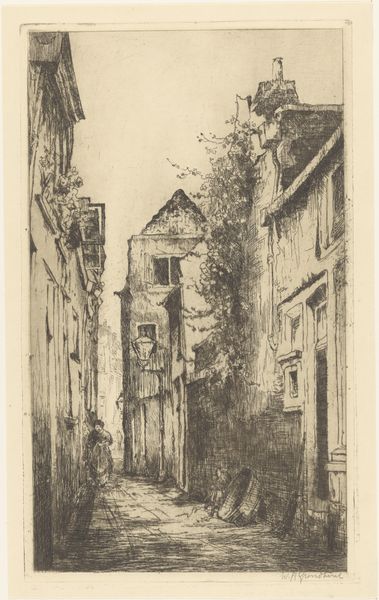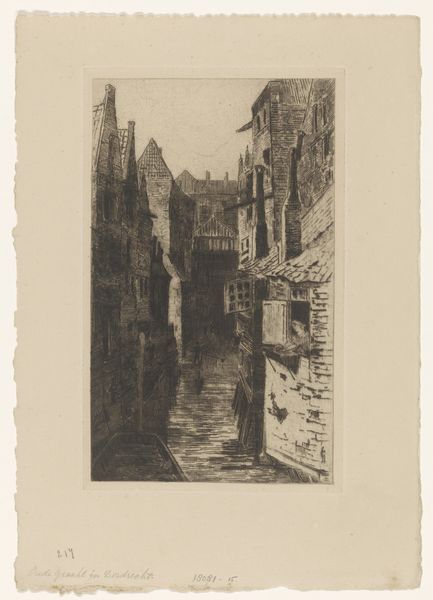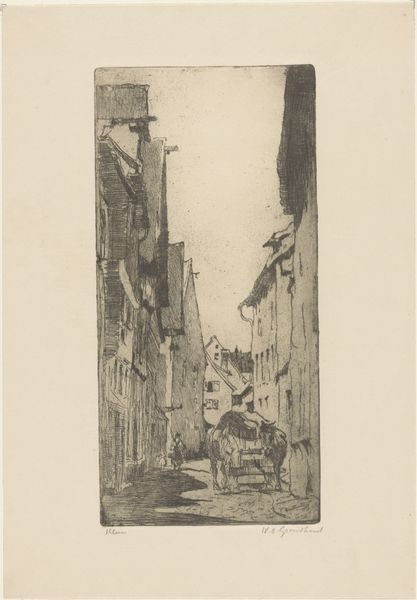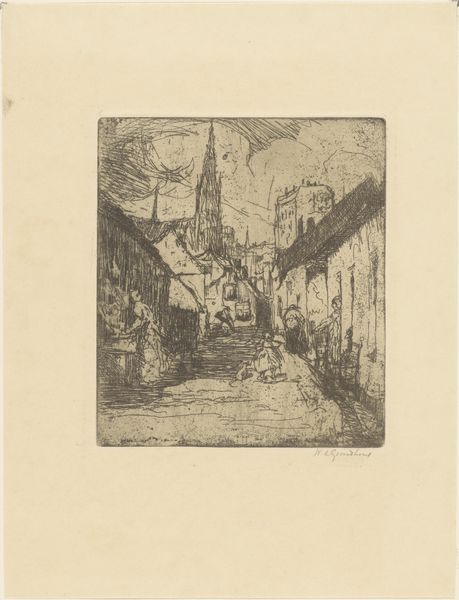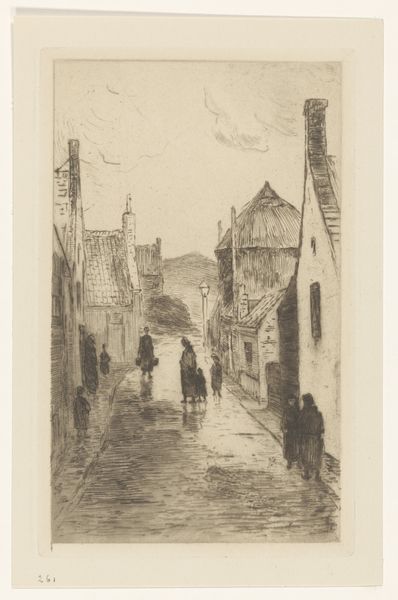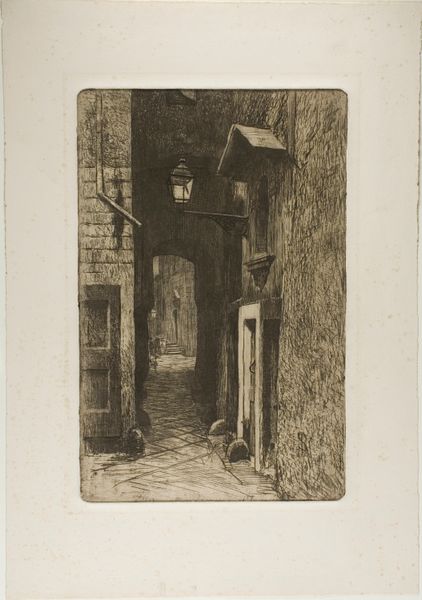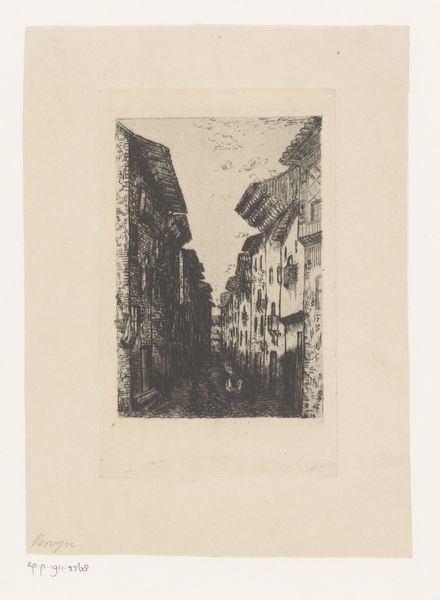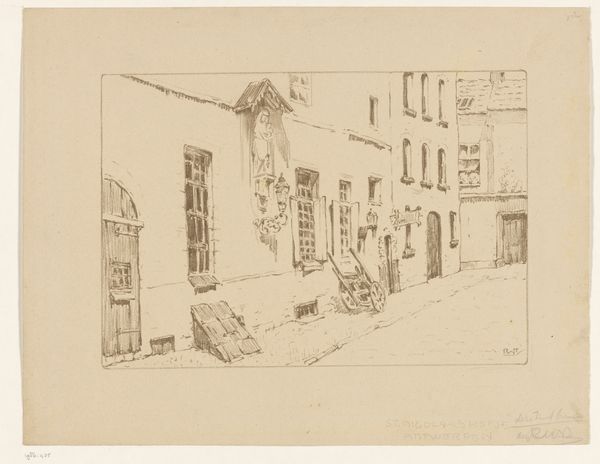
etching
#
amateur sketch
#
toned paper
#
light pencil work
#
pen sketch
#
etching
#
pencil sketch
#
incomplete sketchy
#
landscape
#
etching
#
personal sketchbook
#
pen-ink sketch
#
sketchbook drawing
#
cityscape
#
street
Dimensions: height 253 mm, width 161 mm
Copyright: Rijks Museum: Open Domain
Curator: I am immediately drawn to the overall mood. The high contrast in such a limited color scheme evokes this uncanny stillness in this bustling place, like a ghost town just past noon. Editor: Indeed. The etching before us is titled "Straat in Arles," or "Street in Arles," and comes to us from the hand of Philip Zilcken, likely crafted between 1867 and 1890. Now in the collection of the Rijksmuseum, it gives the impression of being caught between the fleeting moment and quiet permanence of a hidden-away village. Curator: It does have that sketchbook feel, doesn’t it? Those light pencil strokes suggest something jotted down on the fly… But there's still a gravity in its symbols, even within the limited palette. The buildings seem to press inward, almost shielding that figure lurking just beyond. Do you think that the person represents loneliness? Editor: Absolutely. It’s that push and pull between individual stories, represented by the figure in the street, versus communal memory, symbolized in those rough stoneworks. The shadows themselves become characters. I almost wonder about its status as an "amateur sketch." Zilcken imbues the whole landscape with this charged anticipation, almost an awareness of how easily narratives collapse, yet the buildings stand to observe everything. Curator: What do you mean? Editor: Well, landscape paintings are often charged with narratives around nationalism, tradition, or nature. The street is the intersection of private lives and shared social experience, which makes them potent carriers of collective values. That hidden figure in the distance almost makes one suspicious about the cultural ideas at stake, what's at risk, what endures in that particular landscape, even despite its sketchiness. Curator: So, Zilcken presents us not with a simple street but with something closer to a stage? I think you're onto something. It really gives pause for thought about those subtle visual cues we overlook. Editor: Precisely, that's what is powerful about symbols—what stories do you choose to tell when observing the scene of a village. That contrast becomes everything.
Comments
No comments
Be the first to comment and join the conversation on the ultimate creative platform.
